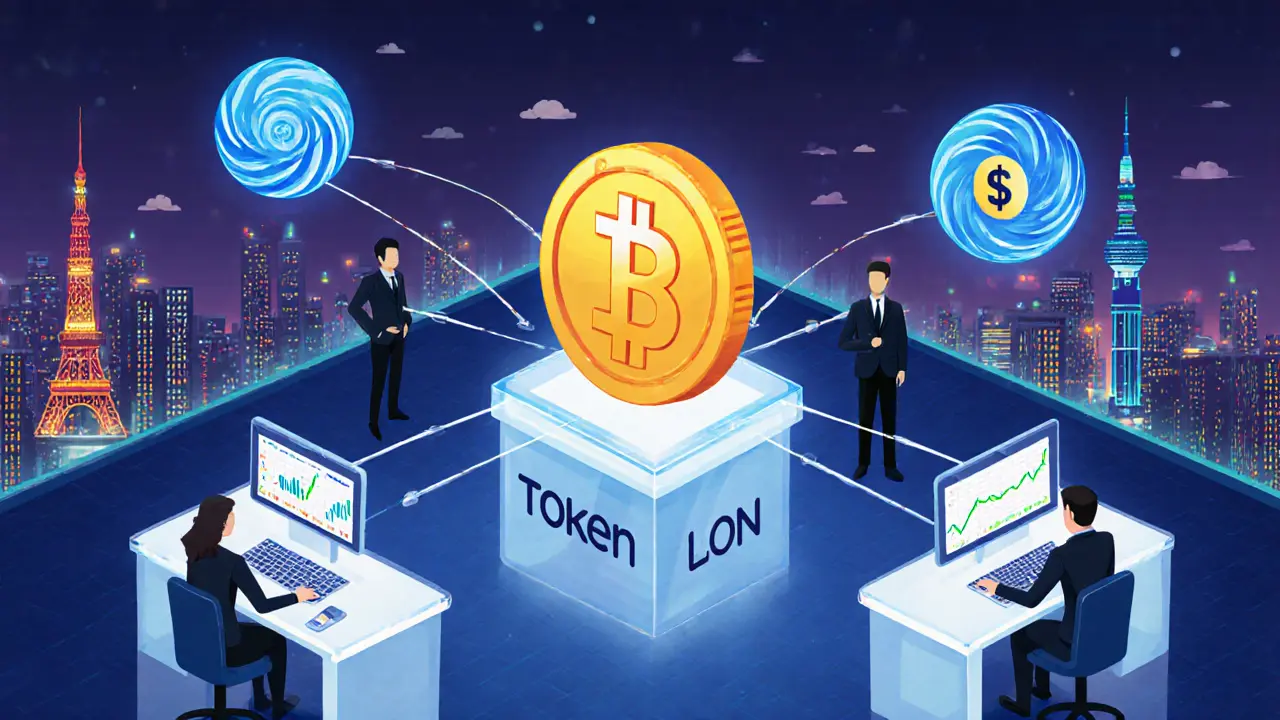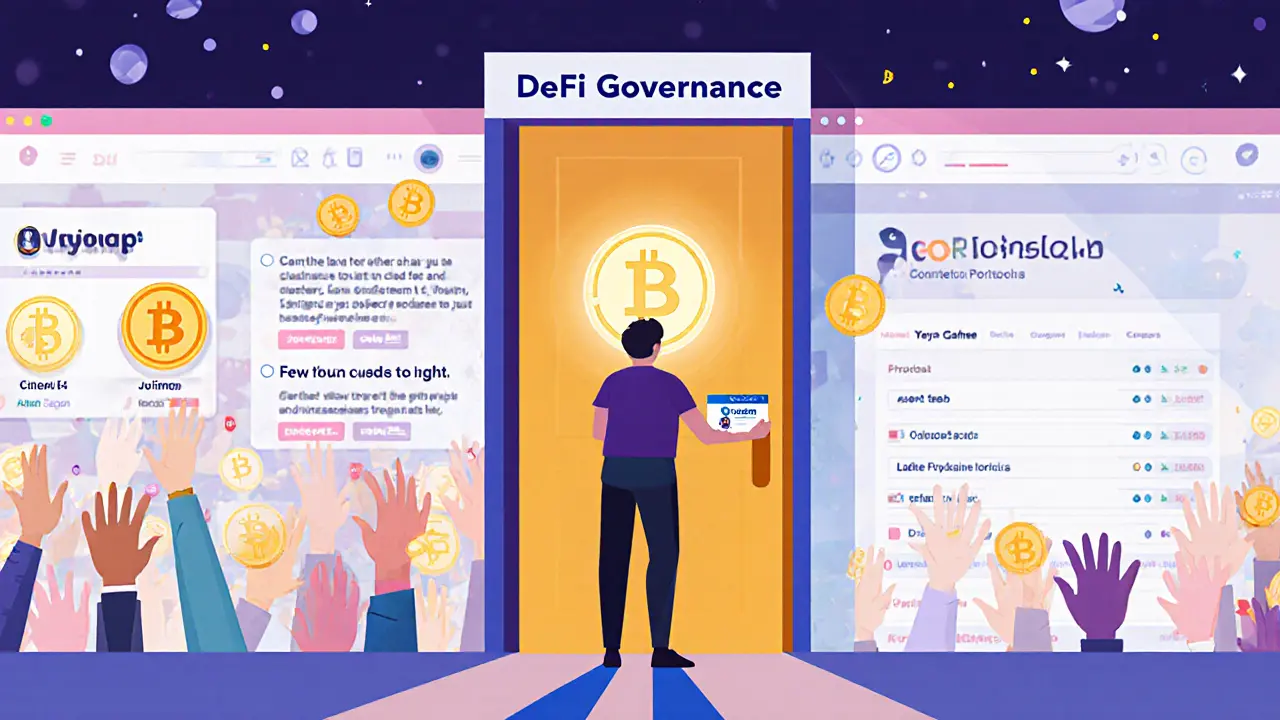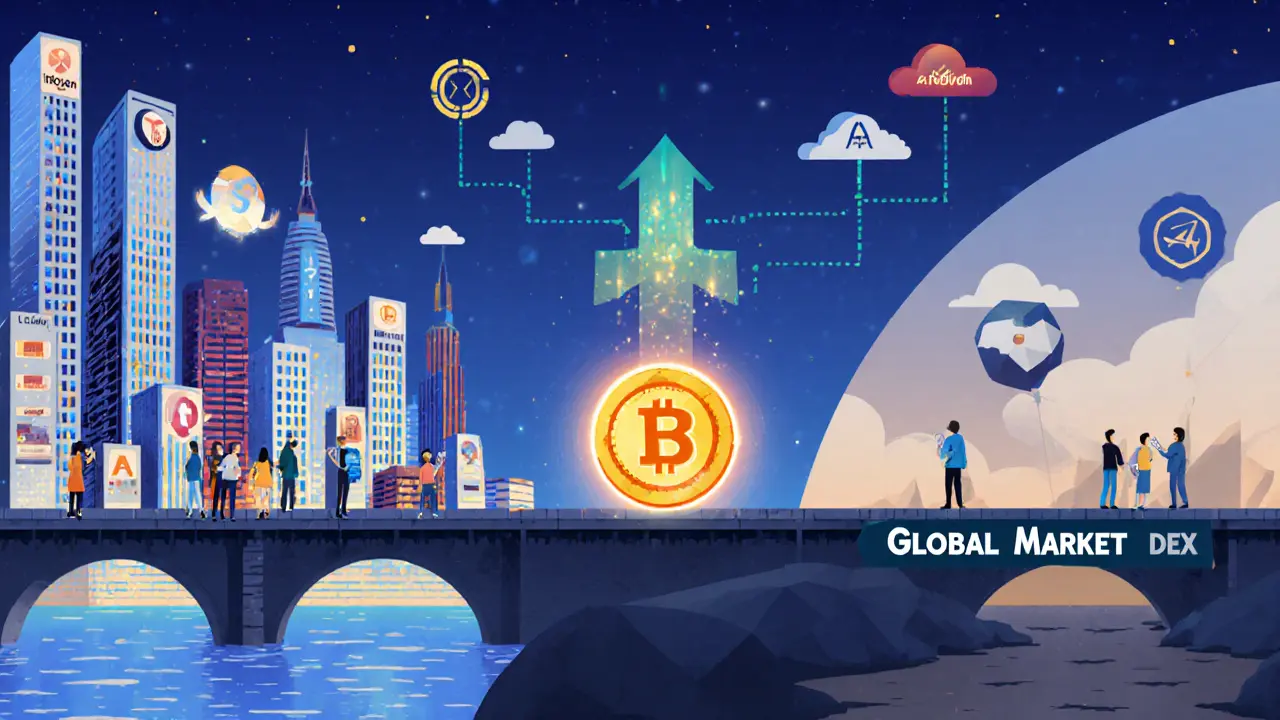What is Tokenlon Network Token (LON)? A Clear Guide to the Decentralized Exchange Token
 Nov, 22 2025
Nov, 22 2025
LON Staking Reward Calculator
Calculate Your LON Staking Rewards
Estimate potential rewards based on your stake amount and locking period. Rewards are distributed weekly from trading fees.
Tokenlon Network Token, or LON, isn’t just another crypto coin. It’s the engine behind Tokenlon, a decentralized exchange (DEX) that’s quietly become a go-to for traders in Asia. Unlike big names like Uniswap, Tokenlon doesn’t rely only on automated liquidity pools. It mixes them with professional market makers to give users better prices and less slippage. And LON is what keeps the whole system running.
What Does LON Actually Do?
LON isn’t meant to be a store of value like Bitcoin. It’s a utility and governance token. That means it has two main jobs: it gives you discounts when you trade on Tokenlon, and it lets you vote on changes to the protocol. If you hold LON and stake it, you earn rewards. The more you stake and the longer you lock it up, the more you get back. It’s a way to reward people who stick with the platform instead of just dumping tokens after a quick flip.
Think of it like a membership card for a trading club. You pay with LON to get lower fees, and you get a say in how the club is run. There’s no central boss deciding rules. Instead, LON holders vote on things like fee structures, new token listings, and protocol upgrades. That’s the whole point of DeFi - putting power in users’ hands.
How Tokenlon Works (Without the Jargon)
Most DEXs like Uniswap use something called an Automated Market Maker (AMM). That’s fancy talk for a math formula that sets prices based on how much of each token is in a pool. The problem? Big trades mess up the price - you end up paying more than you expected. That’s called slippage.
Tokenlon solves this by bringing in professional market makers. These are firms that trade large volumes daily and can offer tight spreads. Tokenlon connects your trade to both the AMM pools and these market makers at the same time. It then finds the best possible price across all sources. According to Tokenlon’s own data, 99% of trades execute with minimal slippage. That’s unusually high for a DEX.
Behind the scenes, Tokenlon uses the 0x Protocol for order matching. This means trades happen directly between wallets, without anyone holding your funds. You never give up control. That’s what makes it non-custodial - and secure.
LON Token Supply and Distribution
There will only ever be 200 million LON tokens. As of late 2023, about 124 million are in circulation. The rest are locked up or reserved.
Here’s how it was split:
- 130 million LON went to the community through mining rewards
- 49.68 million to the core team (vested over two years)
- 10.32 million to early stakeholders
- 10 million to a development reserve
The community got their share through a process called genesis mining. People earned LON by providing liquidity to the LON/ETH pool on Uniswap and staking those LP tokens on Tokenlon. It wasn’t just airdrops - you had to do something to earn it. That created early buy-in from active users.
Today, you can still earn LON by staking your tokens. The rewards come from a portion of trading fees collected on the platform. It’s a simple loop: more trading → more fees → more rewards for stakers.

Why Tokenlon Matters - And Why It Doesn’t
Tokenlon’s biggest strength is its connection to imToken, one of the most popular Ethereum wallets in Asia. Millions of imToken users already have the app installed. With one tap, they can jump straight into Tokenlon to trade. That’s a huge advantage. Most DEXs have to convince users to download a new wallet or learn a new interface. Tokenlon skips that step.
That’s why 65% of Tokenlon’s users are based in China, South Korea, and Japan. For them, it’s not just another DEX - it’s the easiest way to trade crypto within a wallet they already trust.
But here’s the catch: outside Asia, Tokenlon barely registers. Its 24-hour trading volume hovers around $72,000. Compare that to Uniswap’s $1.1 billion. Tokenlon’s market cap is about $53 million. Uniswap’s is over $4.8 billion. That’s not a small gap - it’s a canyon.
Most global traders don’t even know Tokenlon exists. And when they do, they’re turned off by its interface. It’s functional, but not sleek. Uniswap and PancakeSwap are cleaner, faster, and easier for beginners. Tokenlon feels like a tool built for experienced traders who care about price quality over convenience.
Real User Experiences
Reddit users who’ve tried both Tokenlon and Uniswap say the difference shows up in big trades. One trader swapped 5 ETH worth of tokens on Tokenlon and saw only 0.3% slippage. On Uniswap, the same trade would’ve cost 1.2%. That’s a real savings.
But not everyone is happy. On Trustpilot, users complain about slow customer support. If something goes wrong with a transaction, you might wait 12 to 24 hours for a reply. There’s also limited English support, which makes it harder for non-Asian users to get help.
Another issue? Tokenlon doesn’t list as many tokens as its rivals. Version 4 only had 26 tokens. Version 5 added more by integrating with Curve and Uniswap, but it still doesn’t come close to the hundreds available on bigger DEXs. If you’re looking for a rare altcoin, you’re better off elsewhere.

What’s Next for LON and Tokenlon?
Tokenlon isn’t standing still. In late 2023, they launched Tokenlon 5.0, which opened up access to more tokens through integrations with other DeFi protocols. They’ve also patched security holes - including a front-running vulnerability fixed in August 2023.
The biggest change coming is a governance vote in early 2024. LON holders will decide whether to switch from a flat 0.3% trading fee to a dynamic fee model. That means fees could go up or down depending on how busy the network is and how deep the liquidity is. It’s a smart move - it aligns fees with real market conditions.
Long-term, Tokenlon plans to expand beyond Ethereum. They’re testing integration with Layer 2 networks like Arbitrum and Optimism. That could slash gas fees and make trading faster. If they pull it off, they might finally break out of their Asian bubble.
But the odds are still stacked against them. Uniswap, SushiSwap, and PancakeSwap aren’t slowing down. They’re adding features, lowering fees, and expanding into Asia themselves. Tokenlon’s niche is real, but it’s also small. Its survival depends on whether it can keep improving without losing the simplicity that makes it useful.
How to Get Started with LON
If you want to try Tokenlon, here’s how:
- Get an Ethereum wallet. MetaMask works, but imToken is the smoothest option if you’re in Asia.
- Go to tokenlon.im and connect your wallet.
- Deposit ETH or any ERC-20 token you want to trade.
- Choose the token you want to swap for.
- Check the price quote - Tokenlon will show you the best rate across all sources.
- Confirm the transaction in your wallet. Wait for it to mine.
To stake LON, you’ll need to:
- Have some LON in your wallet.
- Go to the staking page on Tokenlon.
- Approve the contract to use your LON.
- Select how long you want to lock it (30, 90, or 180 days).
- Click stake and confirm.
Gas fees can be tricky. If Ethereum is congested, your transaction might fail. Always set your gas limit a bit higher than recommended. About 23% of support tickets come from users who didn’t do this.
Is LON Worth Holding?
It depends on what you want.
If you’re an active trader in Asia and use imToken, LON gives you real value. Lower fees, better prices, and staking rewards make it worth holding. You’re not just speculating - you’re participating in a system that works better for you.
If you’re a casual trader in the U.S. or Europe, LON doesn’t offer much. The interface is clunky, support is slow, and liquidity is thin. You’re better off using Uniswap or Coinbase Swap.
As an investment? LON’s market cap is tiny. It’s not going to make you rich overnight. But if you believe in Tokenlon’s model - hybrid liquidity, Asian focus, governance-driven growth - then holding LON is a bet on a niche that might grow.
Right now, it’s not a top-tier crypto. But it’s not a dead project either. It’s a quiet player with a real edge in a specific market. That’s rare in DeFi. And sometimes, that’s enough to last.
What is LON crypto used for?
LON is the native token of the Tokenlon decentralized exchange. It’s used to get trading fee discounts, earn staking rewards, and vote on protocol changes. It’s not meant for speculation - it’s a utility and governance token that helps keep the platform running.
How do I buy LON tokens?
You can buy LON on decentralized exchanges like Tokenlon itself, Uniswap, or Curve. It’s also listed on some centralized exchanges like Bitget and Poloniex. To buy, you’ll need an Ethereum wallet like MetaMask or imToken and some ETH to pay for gas fees.
Is Tokenlon safe to use?
Yes, Tokenlon is non-custodial, meaning you keep control of your funds. The smart contracts have been audited for security. However, like all DeFi platforms, you’re responsible for your own actions. Mistakes like sending tokens to the wrong address or setting low gas fees can result in lost funds.
Why is Tokenlon popular in Asia?
Tokenlon was developed by the team behind imToken, one of Asia’s most popular Ethereum wallets. Millions of imToken users can access Tokenlon directly from their app with one click. This seamless integration gives Tokenlon a huge advantage in China, South Korea, and Japan.
Can I stake LON tokens?
Yes. You can stake LON on the Tokenlon platform to earn a share of trading fees. Rewards are distributed weekly and depend on how much you stake and how long you lock it. Staking periods range from 30 to 180 days, with longer locks offering higher returns.
What’s the difference between Tokenlon and Uniswap?
Uniswap uses only automated market makers (AMMs), which can lead to high slippage on large trades. Tokenlon combines AMMs with professional market makers, giving users better prices and lower slippage. Tokenlon is also tightly integrated with imToken, making it easier for Asian users to access. But Uniswap has far more volume, tokens, and global users.
Will LON price go up?
There’s no guarantee. LON’s price depends on trading volume, adoption in Asia, and whether Tokenlon can expand beyond Ethereum. If they successfully launch on Layer 2 networks and attract more users, demand for LON could rise. But if they fail to grow beyond their niche, the price may stay flat or decline.
How many LON tokens are there?
The maximum supply of LON is 200 million tokens. As of late 2023, around 124 million are in circulation, with the rest locked in team, stakeholder, and development reserve allocations that are being released over two years.
John Borwick
November 24, 2025 AT 02:38Also, the fact they're moving to Layer 2 is huge. Gas fees on Ethereum are a joke for regular folks. If they nail that, they could actually grow beyond Asia.
Jennifer MacLeod
November 25, 2025 AT 14:22Julissa Patino
November 27, 2025 AT 06:01Omkar Rane
November 27, 2025 AT 21:17Daryl Chew
November 29, 2025 AT 00:35Jane A
November 30, 2025 AT 12:16Jennifer Morton-Riggs
December 1, 2025 AT 02:17